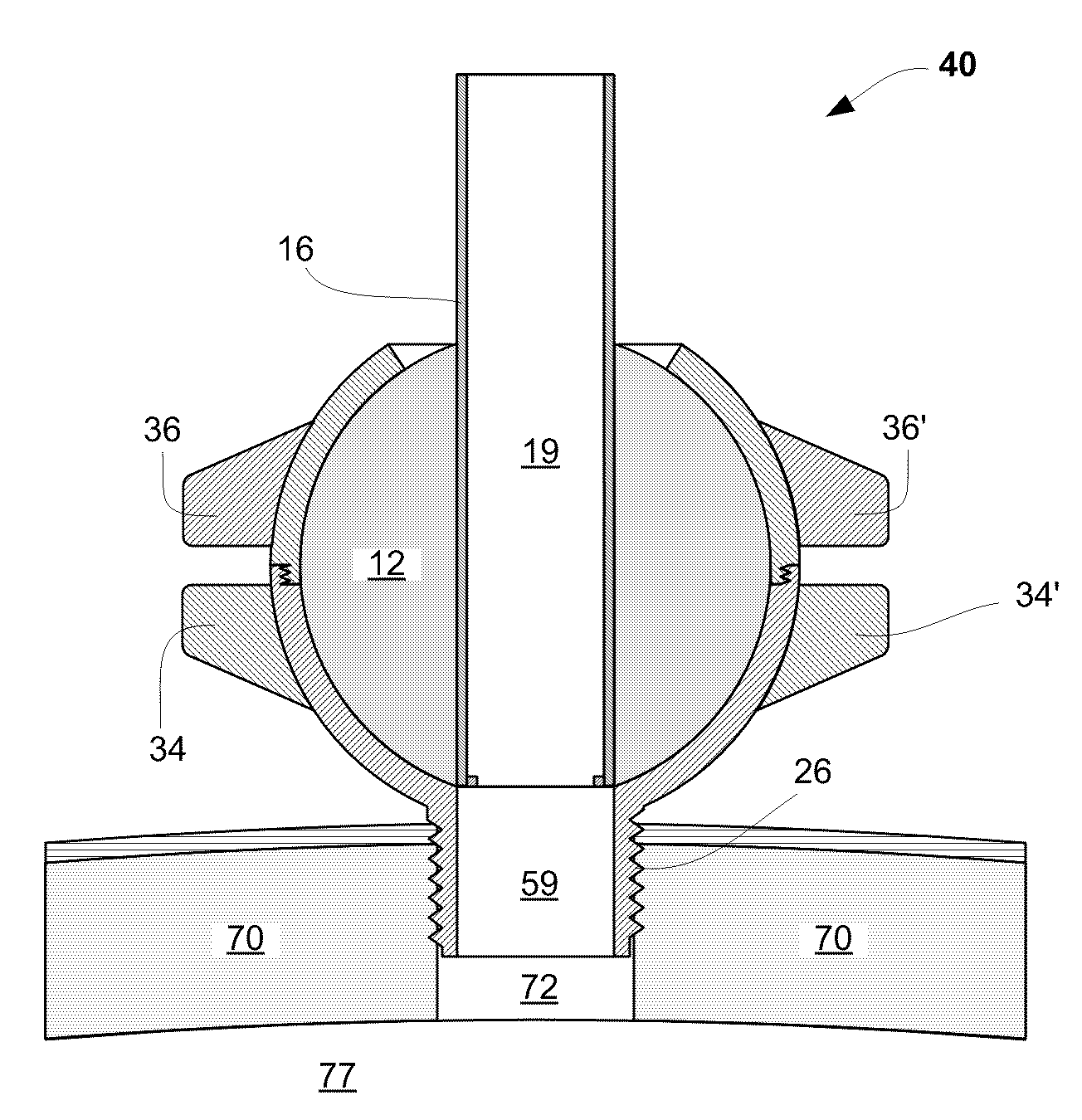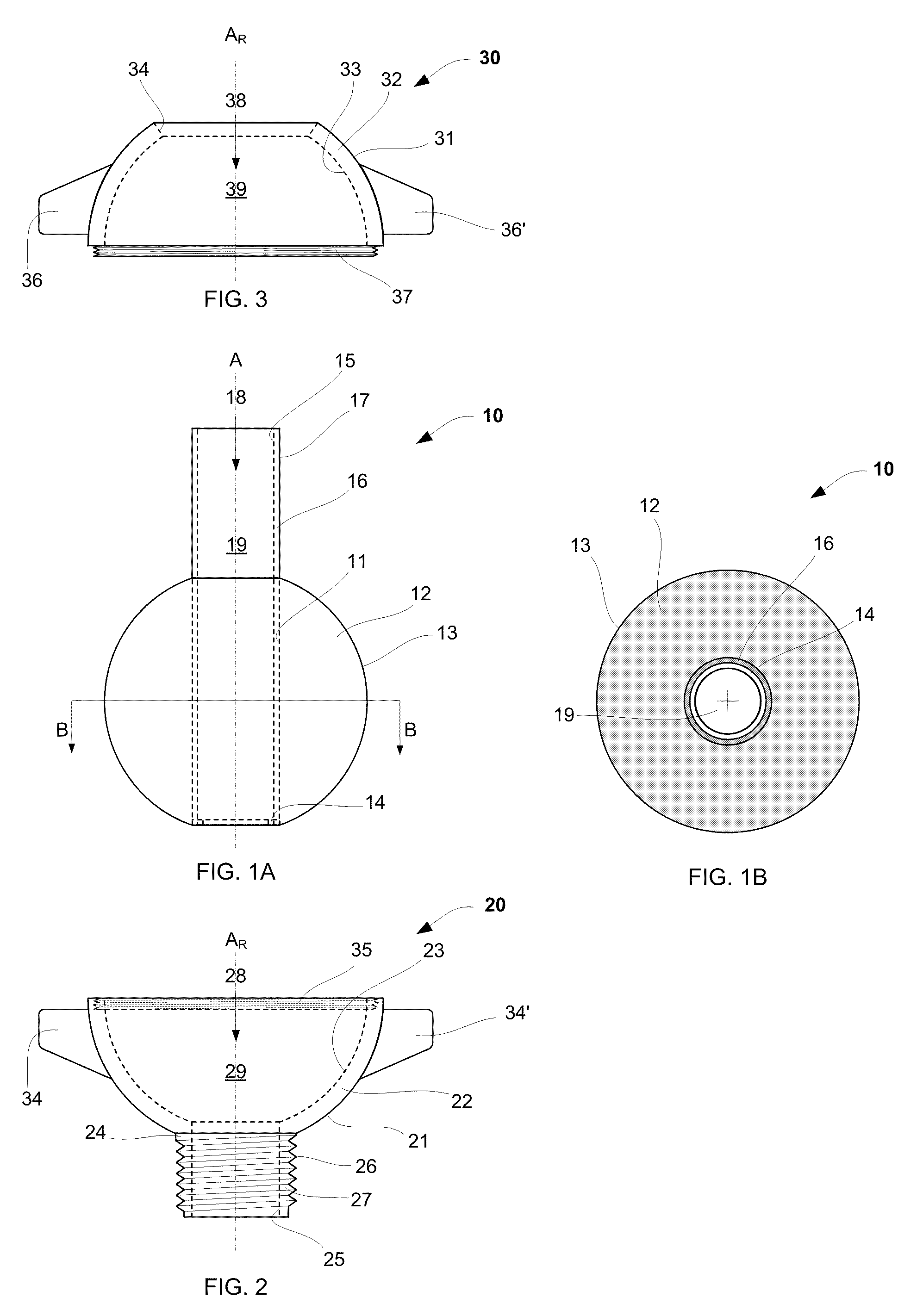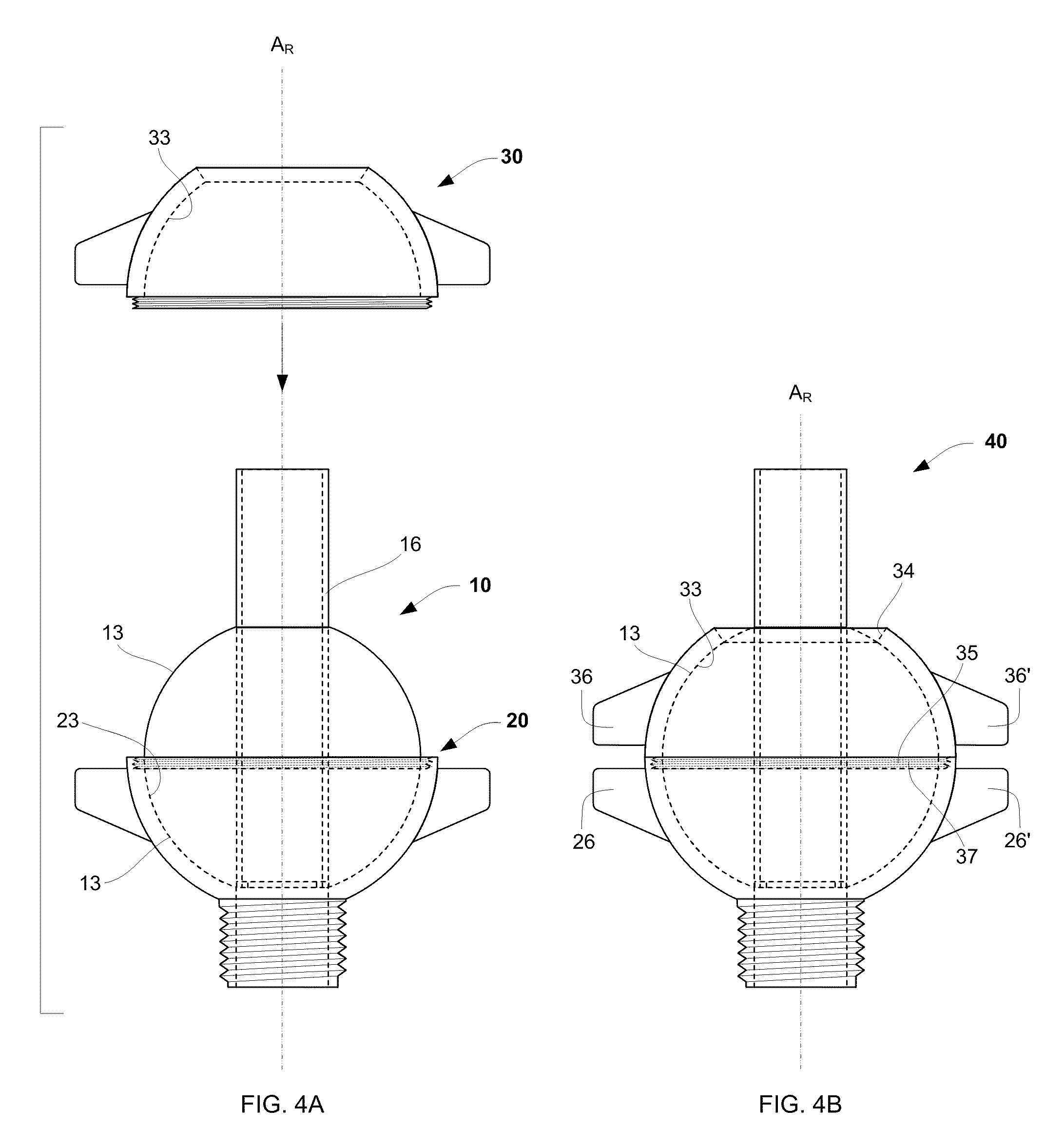Method and apparatus for directed device placement in the cerebral ventricles or other intracranial targets
a technology of directed device placement and target, which is applied in the field of intracranial access, can solve the problems of harm to patients, inability to accurately place devices in the intracranial cavity, and difficulty in accurate placement, and achieve the effects of small modification, easy learning curve, and easy adaptation
- Summary
- Abstract
- Description
- Claims
- Application Information
AI Technical Summary
Benefits of technology
Problems solved by technology
Method used
Image
Examples
Embodiment Construction
[0048]The invention will now be described in further detail by reference to the drawings, which illustrate alternative embodiments of the invention. The drawings are diagrammatic, showing features of the invention and their relation to other features and structures, and are not made to scale. For improved clarity of presentation, in the FIGs. illustrating embodiments of the invention, features corresponding to features shown in other drawings are not all particularly renumbered, although they are all readily identifiable in all the FIGs.
[0049]In various embodiments, cranial access apparatus includes a guidepiece mounted in a receptacle. The receptacle includes a lower part (cup) and an upper part (cover). The guidepiece includes a body having the form of a ball having a bore through the center, and a guide tube in the bore. In some embodiments the guide tube projects from the body, constituting a receiving end of the guidepiece. The parts of the receptacle are configured so that whe...
PUM
 Login to View More
Login to View More Abstract
Description
Claims
Application Information
 Login to View More
Login to View More - R&D
- Intellectual Property
- Life Sciences
- Materials
- Tech Scout
- Unparalleled Data Quality
- Higher Quality Content
- 60% Fewer Hallucinations
Browse by: Latest US Patents, China's latest patents, Technical Efficacy Thesaurus, Application Domain, Technology Topic, Popular Technical Reports.
© 2025 PatSnap. All rights reserved.Legal|Privacy policy|Modern Slavery Act Transparency Statement|Sitemap|About US| Contact US: help@patsnap.com



